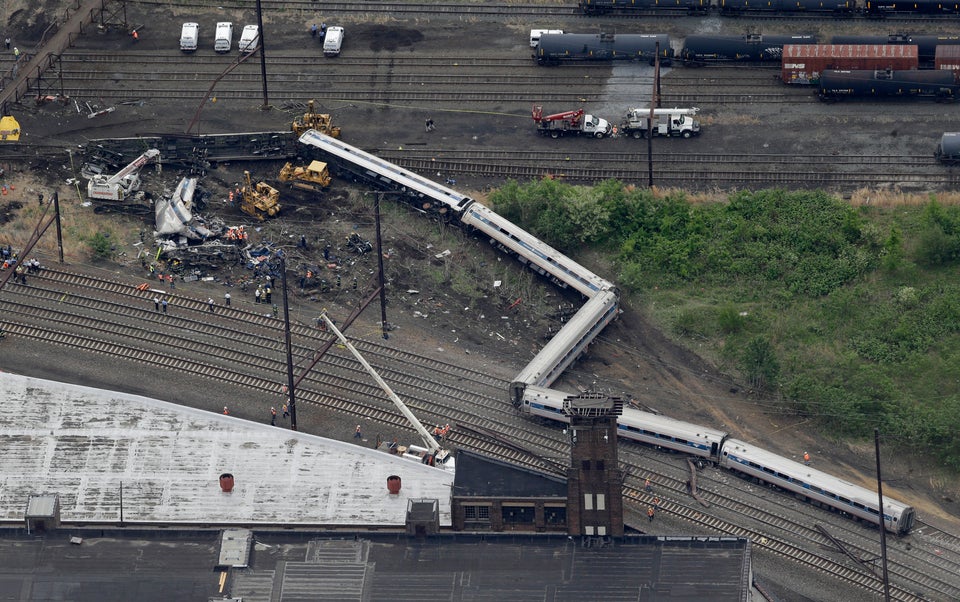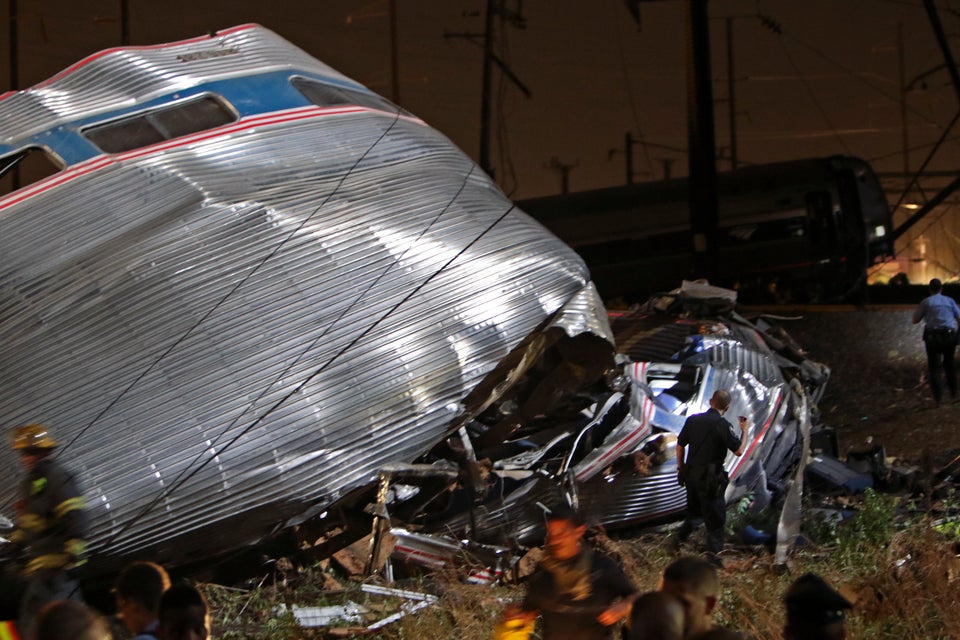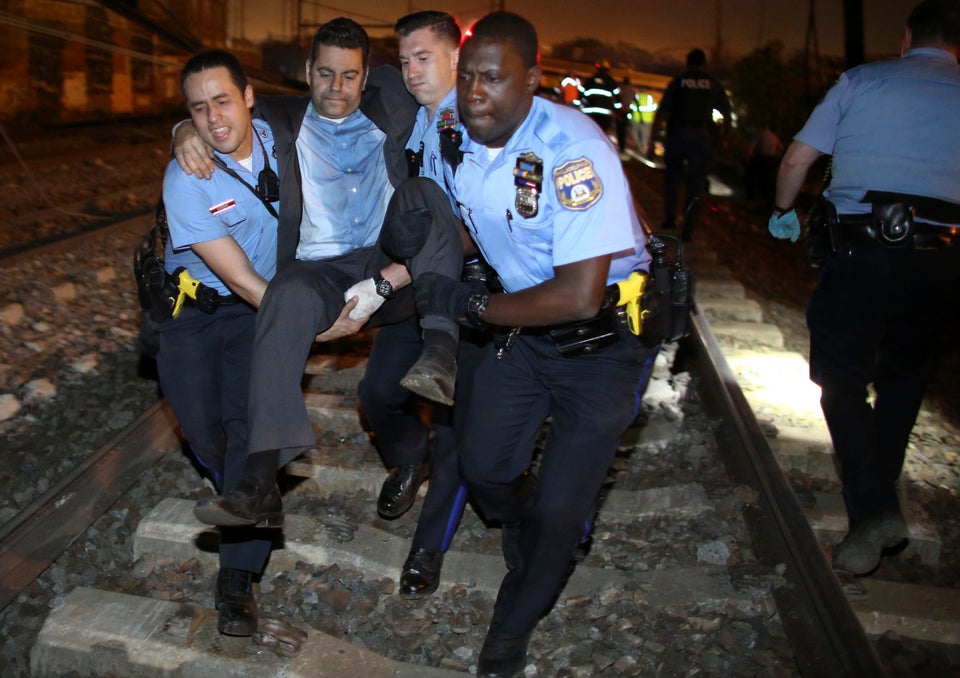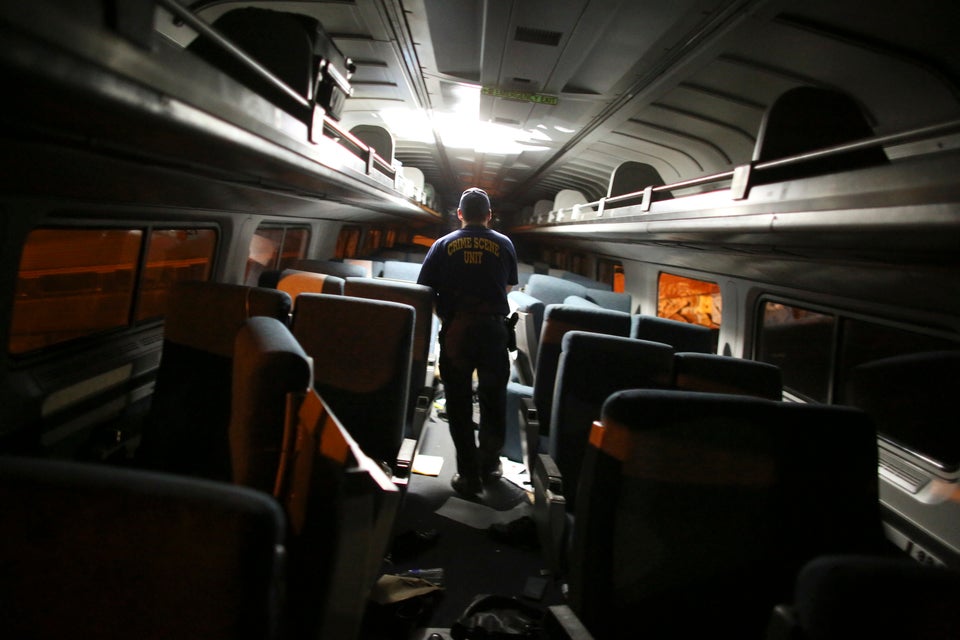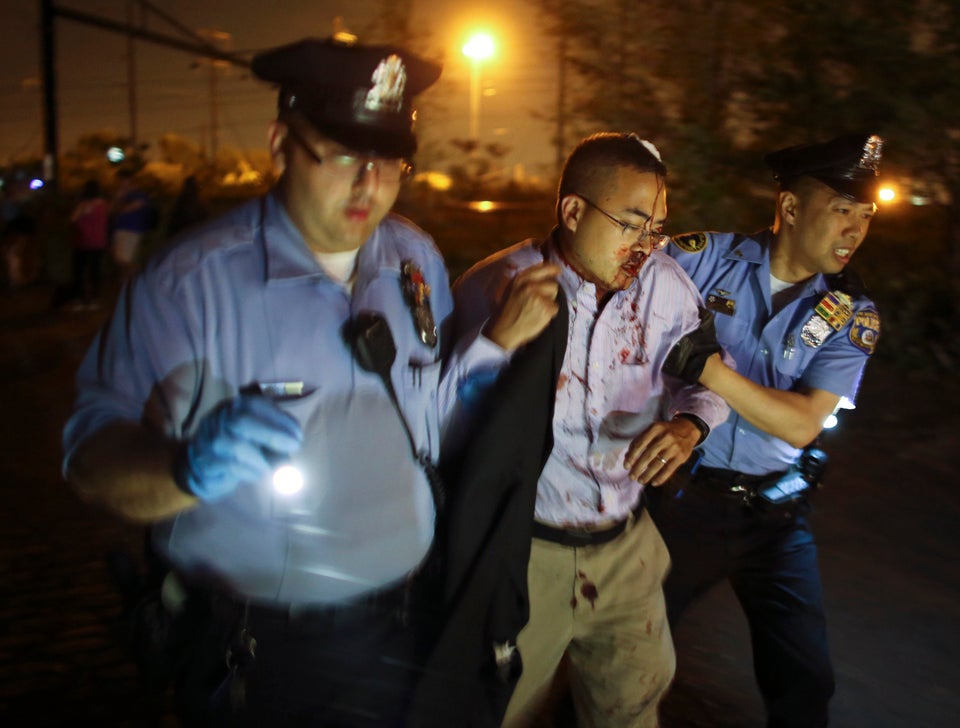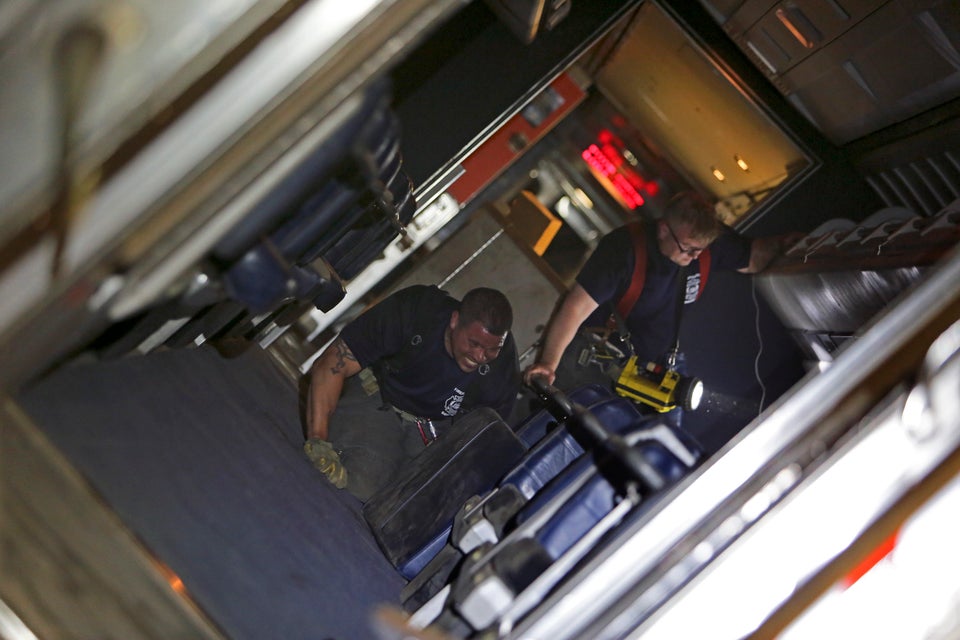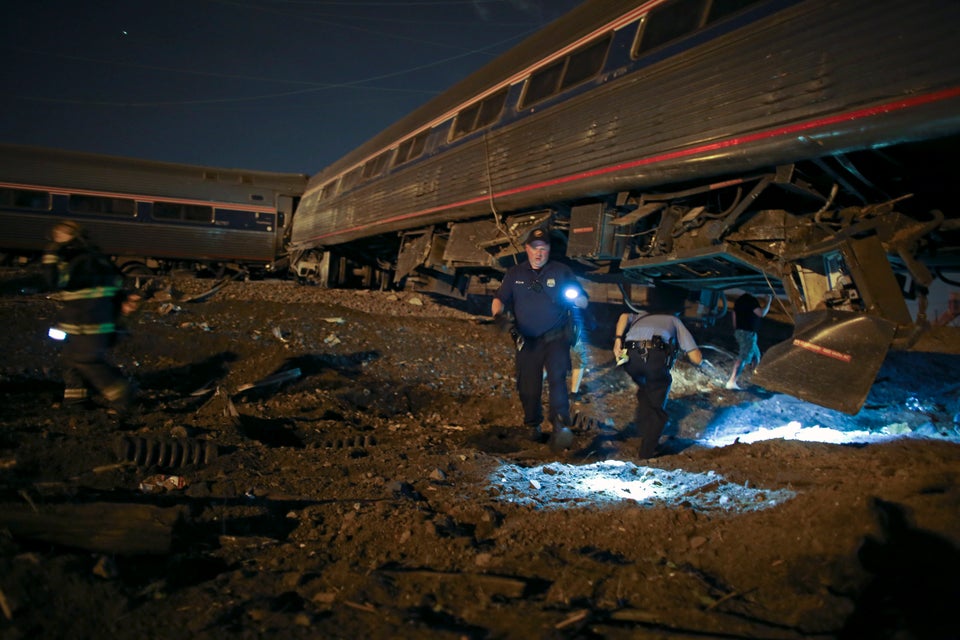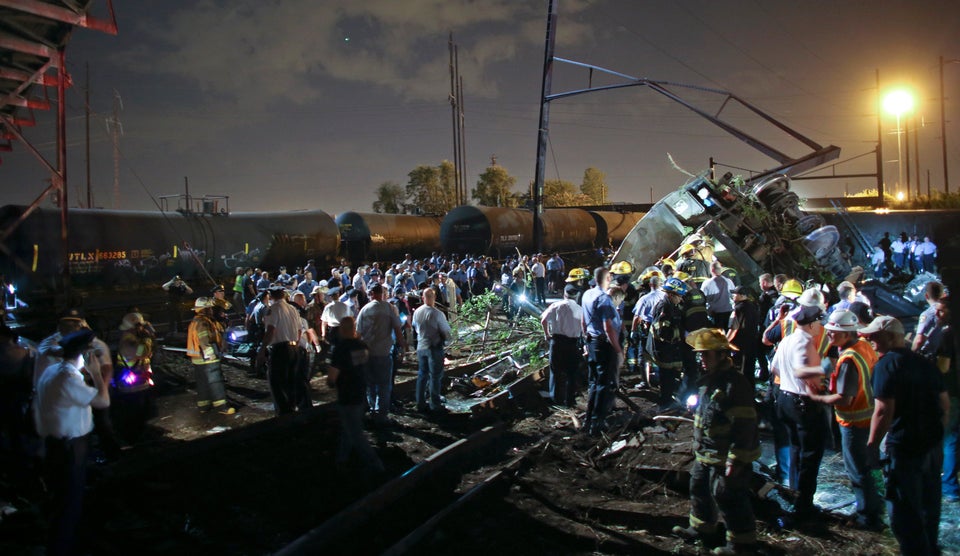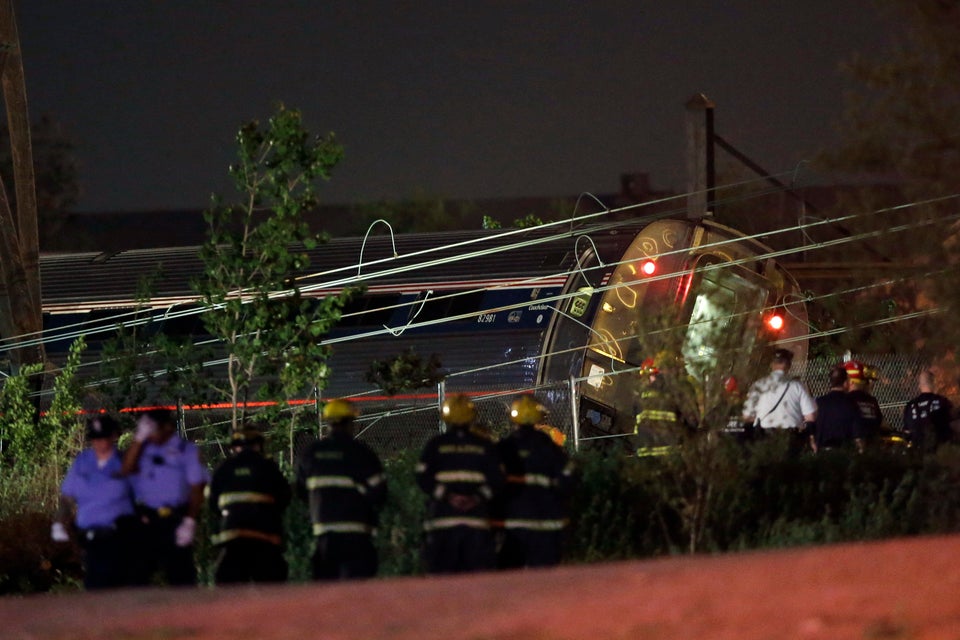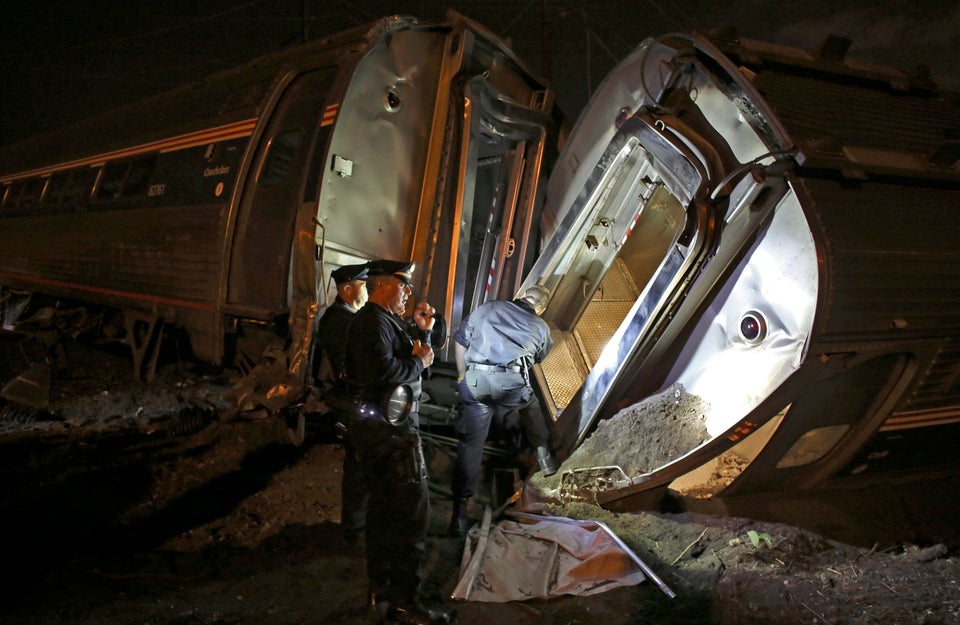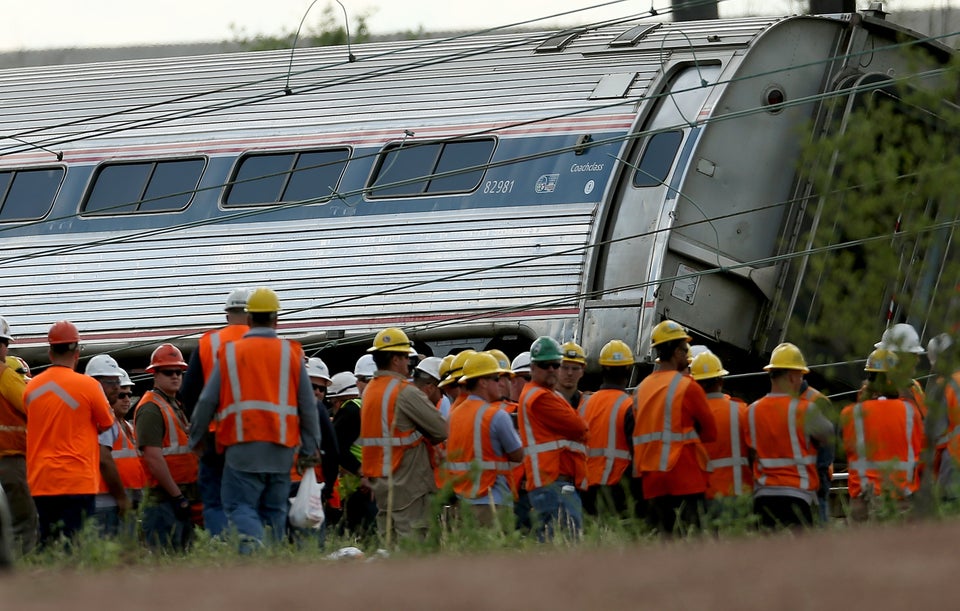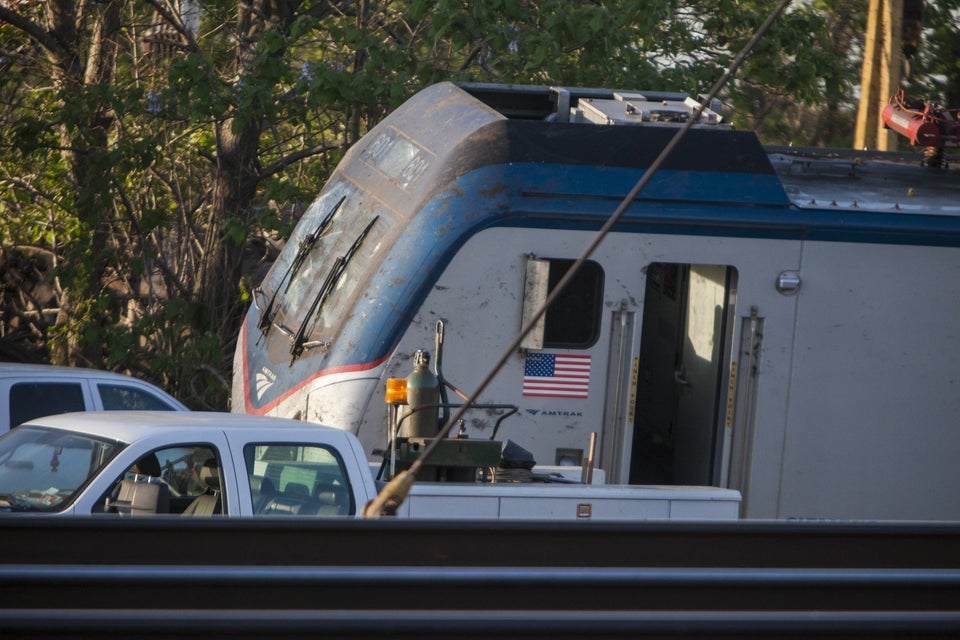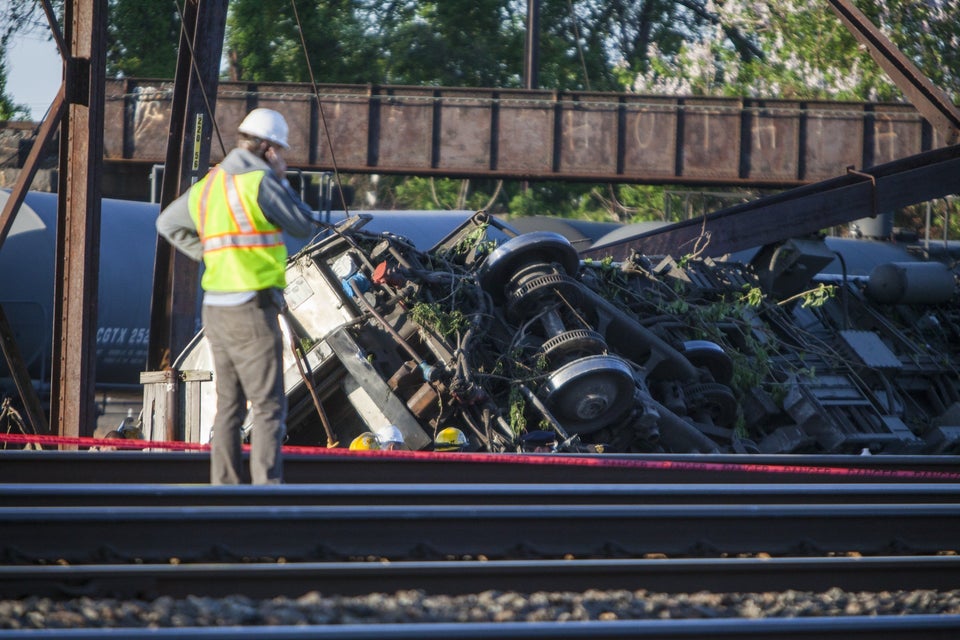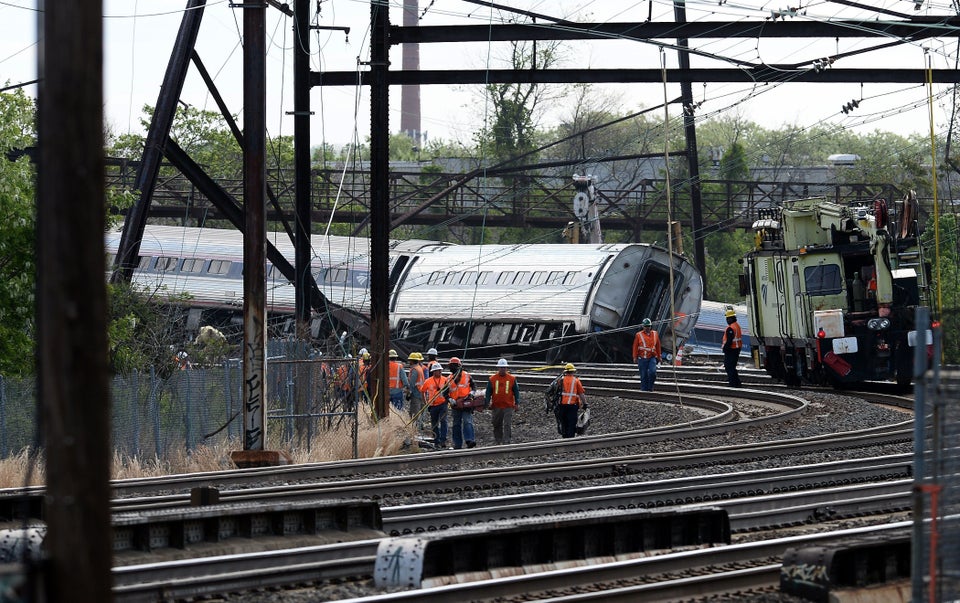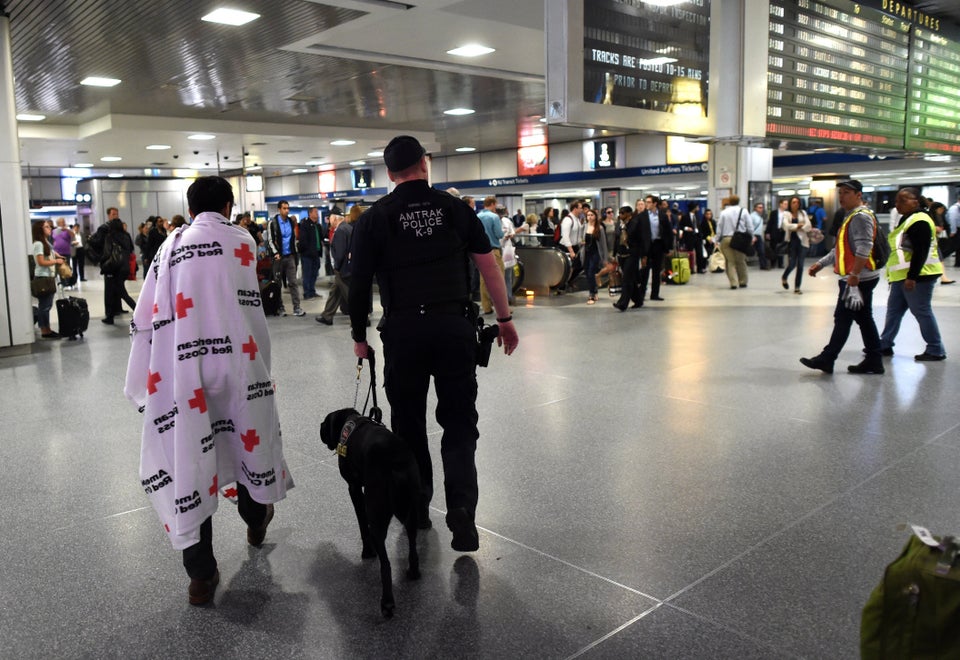According to multiple reports, investigators believe that Amtrak Regional Train 188 -- the train that derailed in Philadelphia Tuesday night, killing at least seven people and injuring more than 200 -- was speeding when it jumped the tracks. Just before it derailed, the train was rounding a curve where the speed limit was 50 mph. As it took that curve, Amtrak Regional 188 was traveling over 100 mph.
The National Transportation Safety Board announced that information Wednesday. But Michael Noda, a Philadelphia transportation blogger, already knew it. Some time prior to the announcement, Noda had used surveillance video and basic arithmetic to show the train was going much, much faster than it should have been. The Huffington Post confirmed Noda’s methods in a phone interview, and replicated his arithmetic.
Here's how it works: On Noda’s site, Sic Transit Philadelphia, he analyzed video obtained by CNN of the train rounding a bend immediately before the crash. Looking at the time on the surveillance video, Noda counted 4.5 seconds between the first car coming into view and the last car passing out of the frame.
Based on Noda's identification of the train's eight cars -- an ACS-64 locomotive at the front, followed by seven Amfleet I passenger cars -- he was able to calculate the length of the entire train. The combined length of a 67-foot ACS-64 and seven 85-foot Amfleet I cars is 662 feet. That means the train traveled 662 feet in 4.5 seconds.
To calculate how fast the train was going in miles per hour, Noda converted feet per second to miles per hour. First, to convert seconds to an hour, he found the ratio of 4.5 seconds to the number of seconds in an hour. Since there are 3,600 seconds in an hour, a 4.5-second interval occurs 800 times in an hour.
Then, to find out how many feet a train going at the same rate would travel in an hour, he multiplied the distance traveled in 4.5 seconds -- 660 feet -- by 800, the number of times that a 4.5-second interval occurs in an hour. This means that a train traveling at a rate of 660 feet every 4.5 seconds will travel 529,600 feet in an hour.
Finally, Noda divided the total feet per hour -- 529,600 -- by the number of feet in a mile, which is 5,280. He found that the train was going just over 100 mph.
Noda, who lives in Francisville, a North Philadelphia neighborhood not far from the site of the crash, started writing about public transportation when he moved to Philadelphia from suburban Ohio several years ago. Coming from a place without any public transit, Noda said, moving to Philadelphia was an “eye-opening experience.”
Now Noda advocates for public transportation investment at the local level. He is on the advisory board of The 5th Square, a political action committee devoted to “smart policy for transportation, public space, land use, and better governance in Philadelphia,” according to its website.
For Noda, though, transportation blogging is just a hobby. He makes his living playing professional poker. And Tuesday’s crash notwithstanding, Noda says the odds are still very much in support of train travel.
“Rail is still incredibly safe on a statistical basis,” he said.
Before You Go
